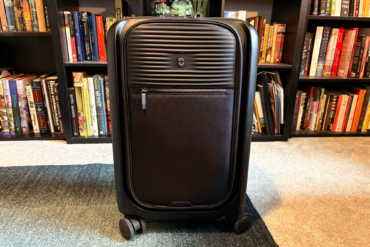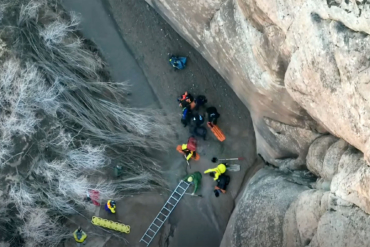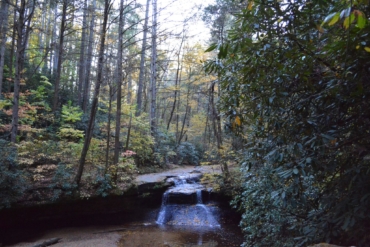Author Dina Mishev is a Jackson Hole, Wyo., local, where she has lived, biked, skied, climbed, and hiked since 1997. This article originally appeared on RootsRated.com.
Ahhh—hiking in Jackson Hole. You’ve got so many choices, given a decade you probably couldn’t hike everything. I’ve lived here almost 20 years and I still discover great new hikes every summer.
If you’re passing through and only have a few days, don’t miss these 10 hikes in Jackson Hole and Grand Teton National Park. A blend of tough and easy, long and short, all are, for one reason or another, awesome.
10. Snow King
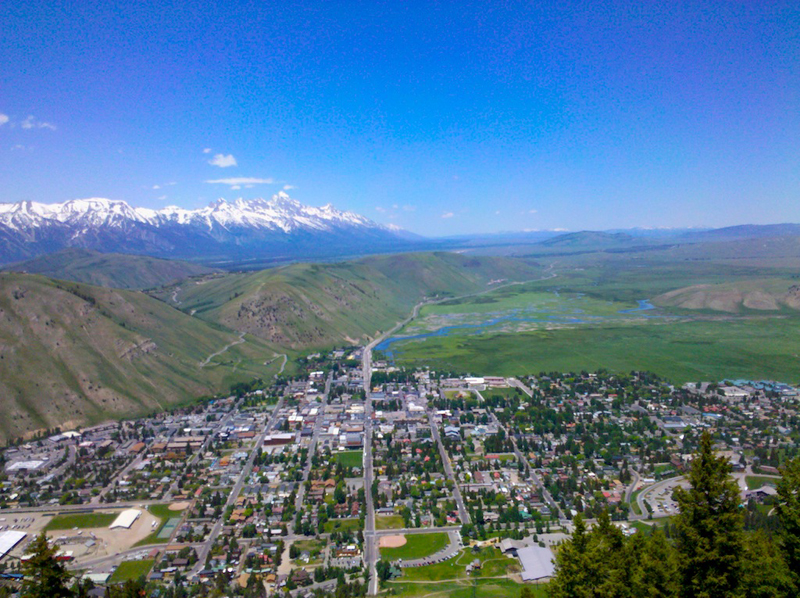
Short, sweet, and steep. Just .8-mile from the Town Square, Snow King is the valley’s summertime social hub. Because it can be done in a long lunch hour, expect to see lots of people, and twice as many dogs! Snow King is popular not only because it’s right downtown, but also because there’s a lift you can ride down to save your knees. It’s $5 per ride and comes with priceless views of the valley, Flat Creek, the National Elk Refuge, the entire Teton Range, and, on clear days, even some of Yellowstone’s mountains.
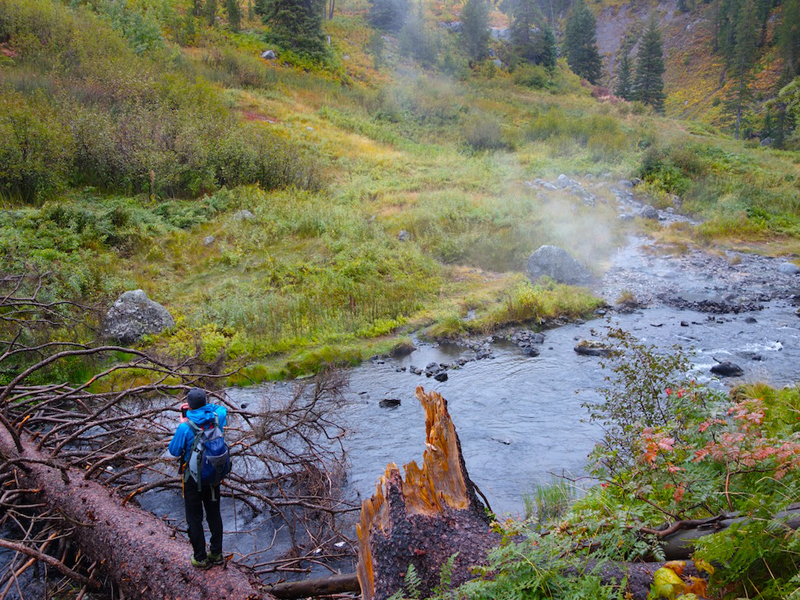
Tucked in the least visited corner of Yellowstone National Park, this hike begins along a river through pine forest. You eventually emerge into giant grassy meadows, which are favorites of the park’s grizzlies. Do not do this hike without bear spray. The best part of this out-and-back is that its turnaround point is a natural hot spring at the base of a waterfall. Do the 22 miles as an overnight or as a long day trip. The trail is mostly flat, so the latter option is manageable if you so choose.
8. Static Peak
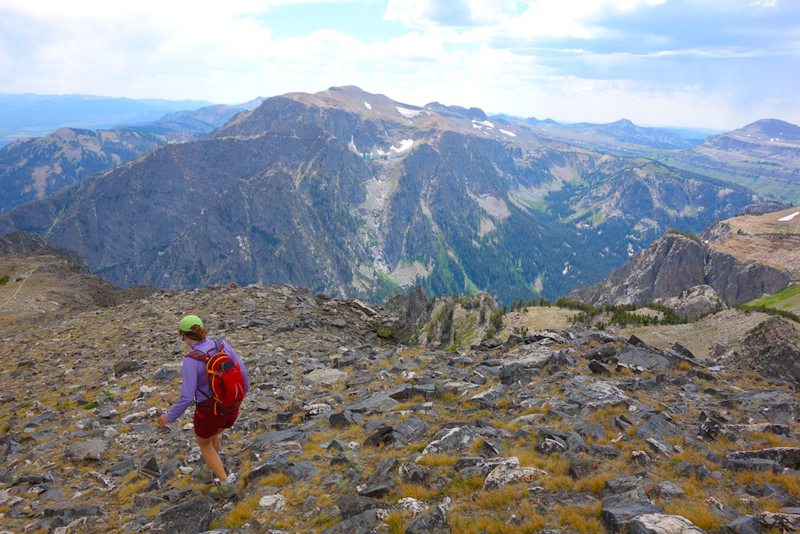
Static Peak is one of the few truly non-technical summits in the Tetons. It’s 17 miles round-trip from the Death Canyon trailhead and, yes, the trail to the top climbs 5,000-some feet, but you don’t need to worry about pulling any rock climbing moves along the way. On the way down, look for Rimrock Lake hanging in a tiny cirque high above the south side of Death Canyon.
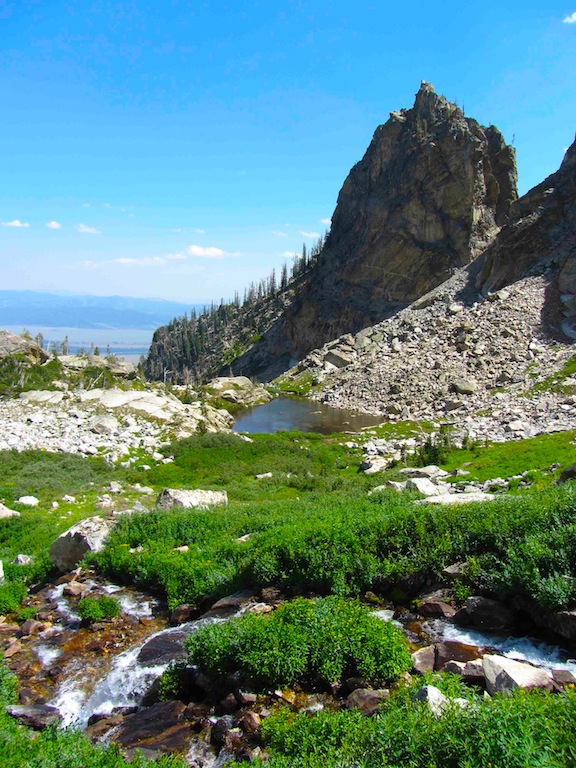
Few places in Grand Teton National Park are so aptly named. Looking up at Hanging Canyon tucked between the much larger Cascade and Paintbrush canyons, from the far shore of Jenny Lake, you can’t imagine many others, aside from rock climbers and mountain goats, who would visit its exiguous reaches. But there’s a trail, albeit one not marked on maps, on the west shore of Jenny Lake. The trail up is steep, but the reward of a couple rarely-visited glacial-fed lakes, ringed by towering granite walls, makes it all well worth it.
6. Mica Lake
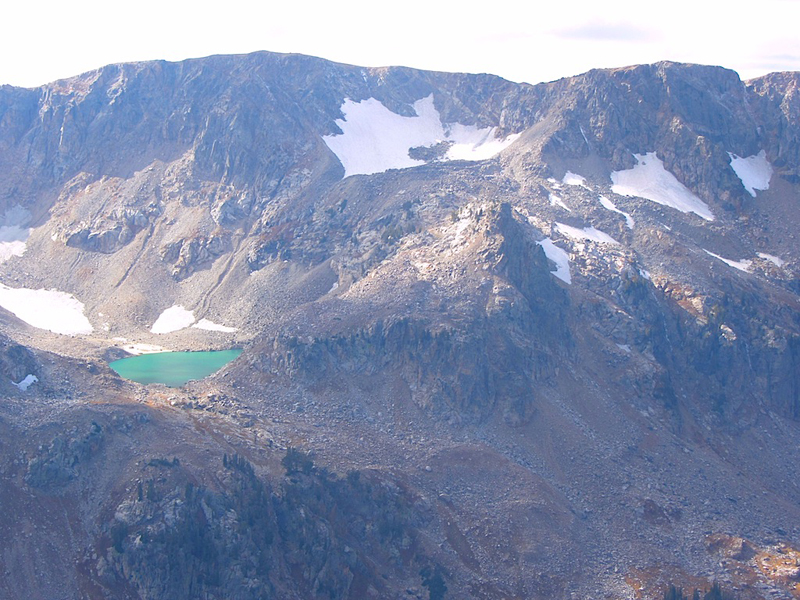
Lake Solitude is among the most visited backcountry lakes in Grand Teton National Park. Twenty minutes away is a much less-visited body of water, Mica Lake. No one goes to Mica. This is most likely because 1) there’s no trail and, 2) from below—Mica is about 400 feet higher than Solitude— there’s no clue or hint that a lake could possibly be lurking above. But in fact, it’s a simple and easy scramble up a boulder field just below Solitude’s outlet.

Brave the “non-maintained” trail up Avalanche Canyon and you might wonder if the rangers and staff are just trying to keep it to themselves. Yes, the trail disappears for a couple of short stretches, but never for long. You’ll likely have to detour to avoid moose more often than you’ll have to hunt for the trail. Avalanche Canyon might be the most moose-ful canyon in the park. Make it above Shosoko Falls and a trio of lakes stretch to the back of the canyon. You’ll hit Lake Taminah, then Snowdrift Lake, and finally, at the very back, tiny Kit Lake. Any of these is a worthy stopping/turnaround point.
4. Alaska Basin
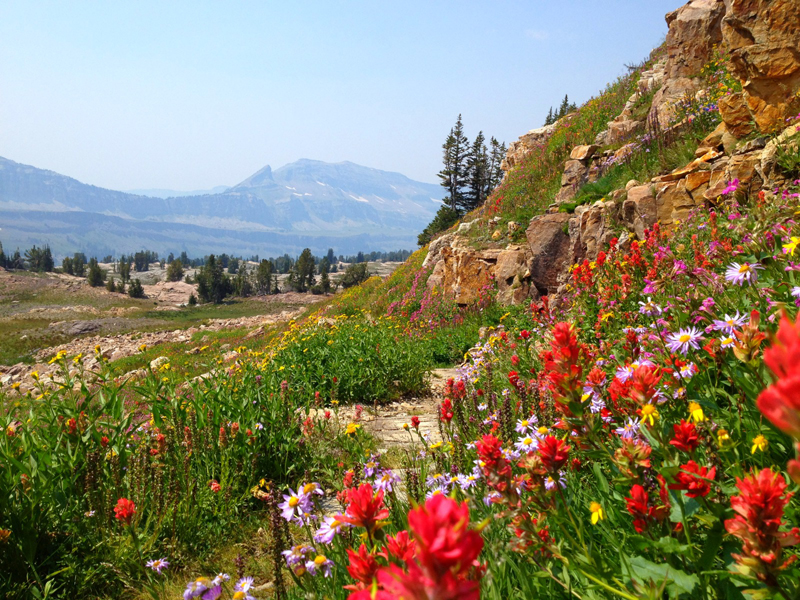
It’s got Teton views, some of the best wildflowers in the area, and abundant wildlife and you don’t need a permit to camp there. Alaska Basin Alaska Basin has all of the perks of Grand Teton National Park, but, since it’s just outside the park in the Jedediah Smith Wilderness, you don’t need to plan ahead to overnight there. You can hike here from the eastern or western slope of the Tetons — I like getting here via Death Canyon/Static Peak Divide/Buck Mountain Pass best. Any of the usual approach routes are between 10-12 miles.
3. Paintbrush to Cascade Canyon
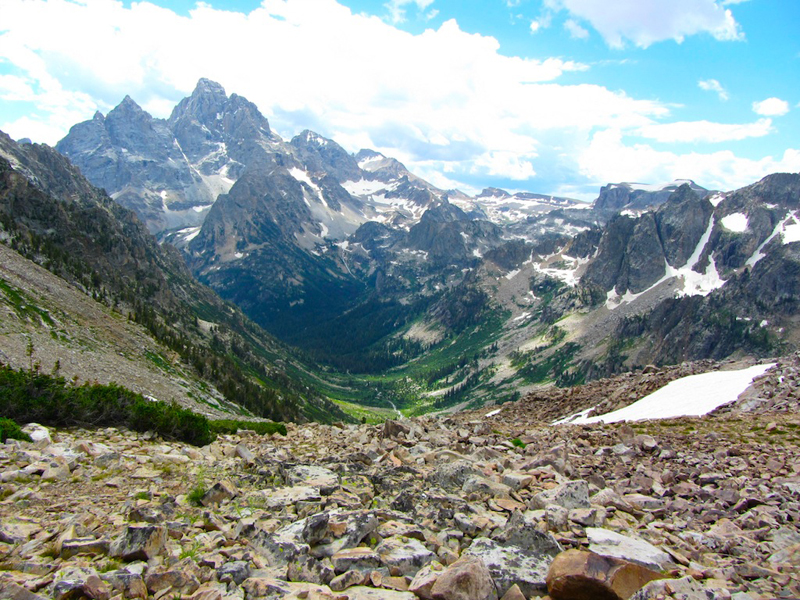
Paintbrush to Cascade Canyon is the most popular long, day-hike loop in Grand Teton National Park, although you can also make it an overnight. There are camping zones in both Paintbrush and Cascade canyons. We prefer starting up Paintbrush and descending Cascade. Coming down the latter, it’s like you’re walking straight into the Tetons’ granitic heart. If you ascend Canyon, all that scenery is behind you, which just seems tragic. Also, climbing up Paintbrush, it’s fun to wonder where the heck there’s a weakness in the encircling mountains. It’s difficult to imagine a hike-able pass hiding anywhere there. But don’t worry, it’s there—way, way up there. Paintbrush Divide is at about 10,700 feet. The entire loop, if you start at the String Lake parking lot, is about 19 miles and climbs 4,000-some feet.
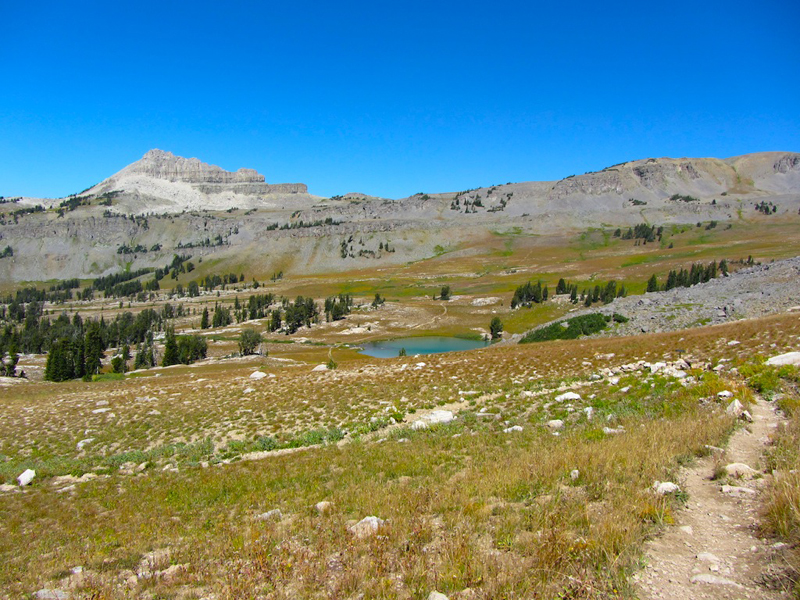
Along the Teton Crest Trail, you can hit all of Grand Teton National Park’s most iconic sites — Marion Lake, Death Canyon Shelf, Alaska Basin, Hurricane Pass, Cascade Canyon, and Paintbrush Divide, all on an epic 45-mile stretch. Take your time and do it over three nights/four days (camping at Marion Lake, Sunset Lake, and then the south Fork of Cascade are must-do’s) or, if you’re a badass, run it in a single day. Locals have clocked under 8 hours for the effort. Seriously. You will have to arrange for a shuttle. If you plan to hitch hike back to your car from the end, you’ll get a ride faster if you come out at South Jenny Lake rather than the North Jenny Lake/String Lake trailhead.
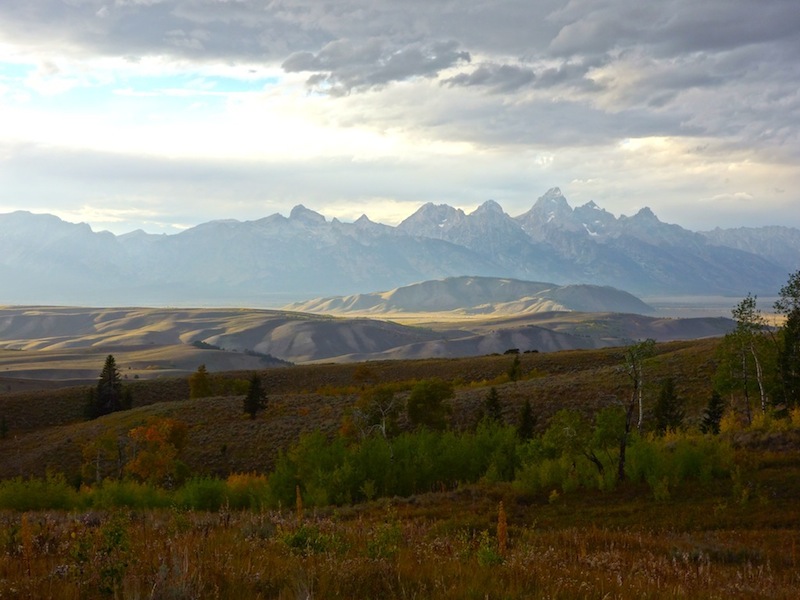
The best hike in Jackson Hole isn’t even in the Tetons! That’s because the best views of the Tetons can’t really be had from the Tetons. The “hole” in Jackson Hole is there because the area is ringed by mountain ranges. Opposite the Tetons, on the valley’s eastern side, are the Gros Ventre mountains, much of which are included in the Gros Ventre Wilderness. Sleeping Indian is one of the Gros Ventre’s higher points and an iconic peak on its own. But, for some reason, it is rarely visited. Only about a dozen people summit it on any summer weekend day. On maps, it’s Sheep Mountain, but because when viewed from most anywhere in the valley the shape of the mountain represents an Indian chief in a headdress lying on his back, everyone calls it Sleeping Indian. The summit of the mountain (11,239 feet) is the Indian’s belly, a 12-mile round-trip hike through pine forests and wildflower meadows.
